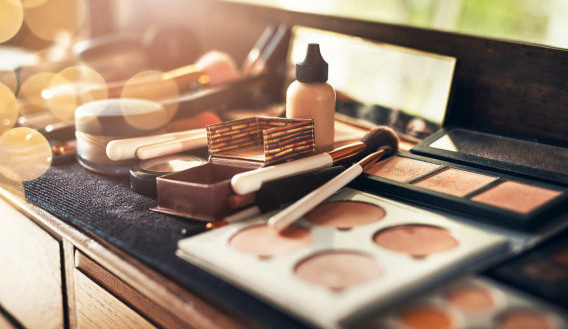Does Talc in Makeup Still Pose an Asbestos Exposure Risk?

Talc has historically been a common ingredient in makeup for its moisture absorption and silky texture. It can help prevent caking as well.
Despite its usefulness, talc can also pose a danger to consumers. A naturally occurring mineral, it can be contaminated with another mineral: Asbestos. This toxic mineral can cause a variety of diseases, including mesothelioma, ovarian cancer and lung cancer.
New research just released in May 2024 from the National Institutes of Health that links ovarian cancer to talc. The study involved 50,000 women in the U.S. and countered the argument many companies using talc have made that there’s insufficient evidence linking talc to cancer.
Asbestos and talc expert at The Mesothelioma Center Michelle Whitmer shares insights about the risk of continued use of talc in makeup. She also shares helpful tips for finding safer alternatives.
Q: Which makeup brands still use talc?
Many big cosmetics companies still use talc in their products. Revlon, for example, states, “Revlon uses talc in some of its Consumer & Professional products,” and claims that it “only uses talc that has been certified as free of asbestos.”
Lush, popular for its “naked products,” which many consumers consider more natural and safer than those of other brands, also contains talc. The company states, “We use talc to give our products a silky-smooth texture and for its ability to absorb moisture.”
The company adds, “A naturally occurring mineral, talc is a hydrated magnesium silicate. When used for cosmetic purposes, it’s milled and purified.”
Q: Is purified talc safe?
Asbestos fibers are microscopic and the U.S. Food and Drug Administration has said removing asbestos from talc is very difficult. It’s very difficult to guarantee all asbestos is removed from talc used in cosmetics.
Q: Does the FDA test talc in makeup for asbestos?
The FDA has tested talc-containing cosmetics for asbestos for several years. But the agency selects 50 samples based on its criteria, such as the popularity of certain brands.
The FDA recently announced that in its 2023 tests, no asbestos was detected in its selected samples. In 2020, however, 18% of the samples tested contained asbestos.
Q: Does talc in children’s makeup also pose a risk?
Talc is often used in play cosmetics and Halloween products for children. In 2020, the Environmental Working Group tested children’s products and found more than 4 million asbestos fiber structures in Princess Girl’s All-in-One Deluxe Makeup Palette from IQ Toys.
In March 2019, the FDA issued a rare alert to consumers about asbestos found in 3 of Claire’s talc-based products for children. A similar alert was issued that same year for at least 4 Beauty Plus talc-based products marketed to children.
Q: Are some brands removing talc and using asbestos-free alternatives?
Because of the risk of contamination and public awareness, some cosmetic companies have been phasing out talc. Lush, as mentioned earlier, still uses talc in products such as its Mask of Magnaminty Self-Preserving face and body mask and Catastrophe Cosmetic face mask. However, it uses tapioca starch instead in its Sleepy Dust dusting powder.
Q: Are there totally talc-free cosmetics brands?
Yes, some brands are talc-free. Kosas, for example, states, “We ban over 2,700 ingredients and adhere to the EU, Sephora and Credo clean standards.” In its list of ingredients they formulate without, talc is at the top of their list.
Saie is also committed to never using talc. And Honest Beauty lists talc among its banned ingredients.
ILIA states: “All of our products are thoughtfully formulated without gluten, parabens, phthalates, petroleum, mineral oil, talc, BHA/BHT, propylene glycol, PEG, cyclomethicones, and chemical screens. We are cruelty-free and certified by Leaping Bunny.”
Milk Makeup publicly shares a robust list of ingredients the company says it’s committed to never using for environmental, ethical and health reasons. Talc tops its list of banned “allergens and irritants.”
“Life is full of unknowns. Where are my keys? How did I stain my shirt already? Can I live off of dry shampoo alone? While we can’t necessarily give you answers to those questions, what we can do is be upfront with you about what we put into, and leave out of, our products.” the company states. “Milk Makeup is all about good ingredients and epic payoff. That’s why we want to be transparent with you.”
Q: How can I know if a product is safe?
Look for “talc-free” on the label. Purchase specifically from talc-free brands.
Q: If I have talc makeup, how should I dispose of it safely?
Most municipalities don’t consider talc hazardous and it can be disposed of in your trash. If you’re concerned about personal exposure as you dispose of products such as powders, you can place them in a plastic bag.